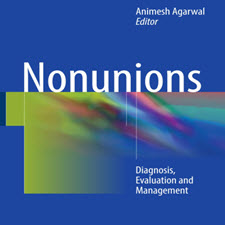Imaging and Diagnosis in Pediatric Brain Tumor Studies
ABSTRACT
Pediatric brain tumors, especially embryonal and other high-grade tumor types, have the propensity to disseminate along the cerebrospinal fluid (CSF) pathway ,while spread outside the central nervous system (CNS) at diagnosis is very rare. The management of pediatric brain tumors has evolved over the last three decades as a result of prospective multicentric clinical trials. Multimodal treatment including surgical resection, radiotherapy, and chemotherapy has led to improved outcomes in many entities. However, treatment- related toxicity often has a major impact on long-term quality of survival. In order to reduce sequelae, the concept of stratification into risk groups according to clinical variables (e.g., age, presence of metastases detected by imaging or cytological evaluation of CSF, and postoperative residual tumor status) has been developed in the last decades, adjusting the intensity of therapy to the risk of relapse. While the principal treatment strategies have not significantly changed over the past few years, enormous progress has been made in understanding of tumor biology, which has led and most likely will continue to lead to further refinements of risk stratification and to the development of novel therapy approaches using targeted drugs in a personalized way.
INTRODUCTION
The aims of surgery are a maximum resection of the primary tumor with minimal damage of neurological function in order to reduce any mass effect, to debulk vital tumor tissue, to establish the biopathological diagnosis, and, if possible, to restore CSF flow. In view of the efficacy of the adjuvant treatment, a microsurgically complete resection should only be intended in case of tolerable risk, and dependent on the effectivity and risk of adjuvant treatment modalities. To evaluate the extent of resection precisely with a low risk of artifacts, the postoperative MRI should be performed in the best technical way and timing possible. In case of significant residual tumor, particularly in nonmetastatic disease, second- look surgery should be discussed in some entities either directly after the primary operation or in the course of further treatment.
چکیده
تومورهای مغزی اطفال، به ویژه جنین و سایر انواع تومورهای پرخطر، تمایل به انتشار در امتداد مسیر مایع مغزی نخاعی (CSF) دارند، در حالی که در خارج از سیستم عصبی مرکزی (CNS) در تشخیص بسیار نادر است. مدیریت تومورهای مغزی کودکان در طی سه دهه گذشته به عنوان یک نتیجه از آزمایشات بالقوه چندقطبی بالینی شکل گرفته است. درمان های چندملیتی شامل رزکسیون جراحی، پرتودرمانی و شیمی درمانی بسیاری از نهادها را بهبود می بخشد. با این حال، سمیت مرتبط با درمان اغلب تاثیر بزرگی در کیفیت بلندمدت بقا دارد. به منظور کاهش عواقب، مفهوم طبقه بندی به گروه های خطر با توجه به متغیرهای بالینی (مانند سن، حضور متاستاز های تشخیص داده شده توسط تصویربرداری یا ارزیابی سیتولوژی از CSF و وضعیت تومور باقیمانده پس از عمل) در دهه های گذشته توسعه یافته است، تنظیم شدت درمان به ریسک عود در حالی که استراتژی های اصلی درمان در چند سال گذشته به طور قابل توجهی تغییر نکرده است، پیشرفت بسیار زیادی در درک زیست شناسی تومور صورت گرفته است که به رهبری و احتمالا همچنان منجر به اصلاح بیشتر ریسک پذیری و توسعه رویکردهای جدید درمان خواهد شد. با استفاده از داروهای هدفمند به شیوه ای شخصی است.
مقدمه
اهداف جراحی حداکثر رزکسیون تومور اولیه با حداقل آسیب عملکرد مغز و اعصاب به منظور کاهش هر گونه اثر توده، برای از بین بردن بافت تومور حیاتی، ایجاد تشخیص biopathological و، در صورت امکان، برای بازگرداندن جریان CSF. با توجه به اثربخشی درمان کمکی، رزکسیون کامل میکروسکوپی باید فقط در صورت خطر قابل تحمل و در معرض اثربخشی و خطر مداخلات درمان کمکی باشد. برای ارزیابی میزان رزکسیون دقیقا با ریسک کم مصنوعات، MRI بعد از عمل باید در بهترین حالت فنی و زمان بندی انجام شود. در مورد تومور باقی مانده قابل توجه، به ویژه در بیماری های غیر متاستاتیک، عمل جراحی دوم باید در بعضی از افراد به طور مستقیم پس از عمل اصلی یا در طی درمان ادامه یابد.
Year: 2016
Publisher: SPRINGER
By : Monika Warmuth-Metz
File Information: English Language/ 83 Page / size: 4.65 MB
سال : 1395
ناشر : SPRINGER
کاری از : مونیکا ورموت-متز
اطلاعات فایل : زبان انگلیسی / 83 صفحه / حجم : MB 4.65

![Imaging.and.Diagnosis.in.Pediatric.[taliem.ir]](https://taliem.ir/wp-content/uploads/Imaging.and_.Diagnosis.in_.Pediatric.taliem.ir_.jpg)

![Evidence-Based.Physical.Diagnosis.4e.[taliem.ir] Evidence-Based.Physical.Diagnosis.4e.[taliem.ir]](https://taliem.ir/wp-content/uploads/Evidence-Based.Physical.Diagnosis.4e.taliem.ir_.jpg)
![Clinicians’, Guides , Radionuclide, Hybrid ,Imaging ,PETCT[taliem.ir] Clinicians’, Guides , Radionuclide, Hybrid ,Imaging ,PETCT[taliem.ir]](https://taliem.ir/wp-content/uploads/Clinicians’-Guides-Radionuclide-Hybrid-Imaging-PETCTtaliem.ir_.jpg)
![Handbook.of.Gynecology.[taliem.ir] Handbook.of.Gynecology.[taliem.ir]](https://taliem.ir/wp-content/uploads/Handbook.of_.Gynecology.taliem.ir_.jpg)
![Keratoconus.Recent.Advances.in.Diagnosis.[taliem.ir] Keratoconus.Recent.Advances.in.Diagnosis.[taliem.ir]](https://taliem.ir/wp-content/uploads/Keratoconus.Recent.Advances.in_.Diagnosis.taliem.ir_.jpg)
![Imaging.in.Bariatric.Surgery.2017_p30download.[taliem.ir] Imaging.in.Bariatric.Surgery.2017_p30download.[taliem.ir]](https://taliem.ir/wp-content/uploads/Imaging.in_.Bariatric.Surgery.2017_p30download.taliem.ir_.jpg)
![Atlas.of.Imaging.in.Infertility.A.Complete.[taliem.ir] Atlas.of.Imaging.in.Infertility.A.Complete.[taliem.ir]](https://taliem.ir/wp-content/uploads/Atlas.of_.Imaging.in_.Infertility.A.Complete.taliem.ir_.jpg)
![Practical.Manual.of.Tricuspid.Valve.Diseases.[taliem.ir] Practical.Manual.of.Tricuspid.Valve.Diseases.[taliem.ir]](https://taliem.ir/wp-content/uploads/Practical.Manual.of_.Tricuspid.Valve_.Diseases.taliem.ir_.jpg)

![Infection.Prevention.New.[taliem.ir]](https://taliem.ir/wp-content/uploads/Infection.Prevention.New_.taliem.ir_-150x150.jpg)
![Pediatric.Demyelinating.Diseases.[taliem.ir]](https://taliem.ir/wp-content/uploads/Pediatric.Demyelinating.Diseases.taliem.ir_-150x150.jpg)
دیدگاه خود را ثبت کنید
تمایل دارید در گفتگو شرکت کنید؟نظری بدهید!